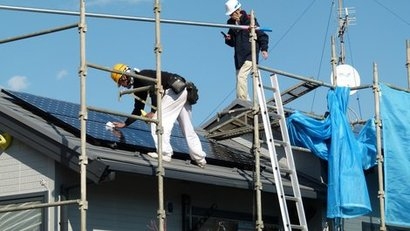
The report was produced in partnership between The Greenlining Institute and California’s Energy Efficiency for All coalition. It’s launch follows a wave of local governments in the US moving to kickstart a new era of cleaner, healthier all-electric homes and buildings.
More than 50 California cities have passed or are considering measures to accelerate all-electric buildings. However, these proposed measures have been attacked by the gas industry on a number of fronts, including how they may impact low-income Californians. The new report shows that through community-led, intentional policymaking, building electrification can actually help close the clean energy gap and lead to greater affordability for working families in California by putting environmental and social justice communities at the front of the line to access healthier, fossil fuel-free homes and high-quality local jobs that may come from greening the building sector.
“The gas industry is working overtime to stoke fear around building electrification, and is specifically targeting low-income residents and communities of colour with this message” said Carmelita Miller, an author of the report and legal counsel for The Greenlining Institute. “We’re here to say that getting off of gas will have important benefits for these communities if policies are rolled out with a mission to improve the health and resilience of environmental and social justice communities.”
Data from Energy and Environmental Consulting (E3) shows gas rates rising steeply in California in coming years, as the cost to safely maintain the aging gas system rises following two major disasters and the demand for gas dries up as California moves forward with its clean electricity and climate targets. Those left on gas in coming decades could be looking at massive bill increases.
Isaac Sevier, co-author of the report and coordinator of California’s Energy Efficiency for All coalition, added that as gas costs increase and more is learnt about the detrimental health and climate impacts of burning gas in our homes, many Californians who can afford to will choose to get off gas on their own. However, policies and support must focus on empowering entire communities who cannot afford new appliances or new homes to access all-electric housing - which is more affordable and will have long-term health benefits.
The framework notes that African Americans, Native Americans, immigrant communities of colour, low-income communities, and others have long suffered systemic exclusion from housing and job opportunities and it urges electrification policies to address this inequity as the state seeks to transform its building stock.
The framework offers five steps on how equitable electrification can be implemented:
Assess community needs.
Establish community-led decision-making.
Develop metrics and a plan for tracking.
Ensure funding and program leveraging.
Improve outcomes.
The framework identifies building electrification as a potential boon for high-quality jobs and careers, including a just transition plan for those who currently depend on gas and other fossil fuels for their livelihood. The inherently local nature of work in the built environment means that, with the right policies and programs, electrification can produce strong careers in communities all across the state. In addition to ensuring that fossil fuel workers have access to good jobs, equitable electrification policies should include workforce development programs that create pathways for people with barriers to employment, so that they too can access good quality electrification jobs.
It also emphasises the importance of community-driven decision making in policy, noting that community members are the experts on what challenges they face, and how policy can help address them.
The report holds up the Public Utility Commission’s (PUC) San Joaquin Valley Disadvantaged Communities Pilot Project as an example of what community-driven policymaking means in practice. The program allowed communities that have never had access to gas infrastructure to work in partnership with an on-the-ground team to identify alternatives that would best suit residents, with a deep focus on long-term engagement and outreach.
Through a process that put community needs centre stage, nine host communities were offered a variety of options to move from wood or propane as a heating and cooking source – to electric appliances powered by clean energy – all driven by community-led choices ensuring the result would benefit their daily lives.
Buildings are responsible for more than a quarter of California’s greenhouse gas emissions. To date 10 cities have passed local measures that incentivise all-electric new construction or place restrictions on gas in new buildings. The PUC has undertaken a proceeding to implement SB 1477, which creates incentives for clean heating technologies, and is looking at pathways to cut pollution from buildings using electrification. Under AB 3232, the California Energy Commission is currently studying the most cost-effective pathways to cut pollution from buildings by 40 percent by 2030.
For additional information:
Report: Equitable Building Electrification: A Framework for Powering Resilient Communities

